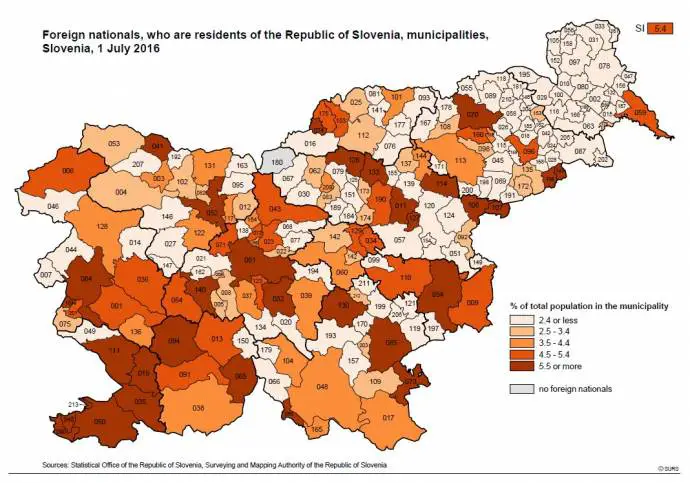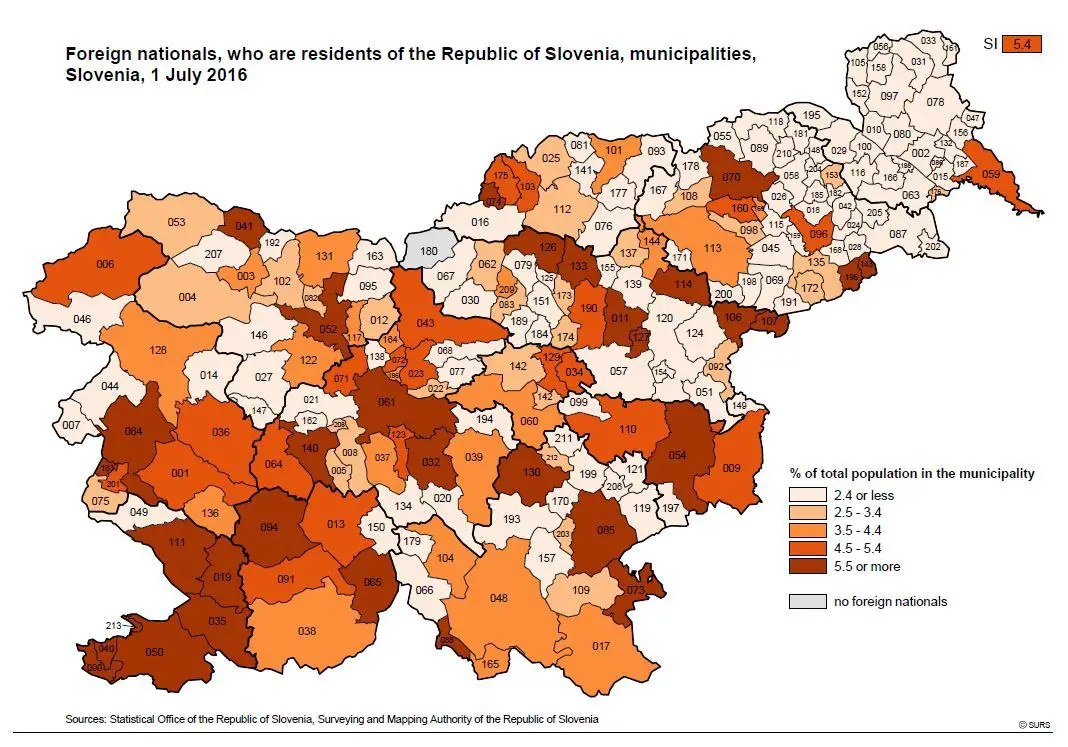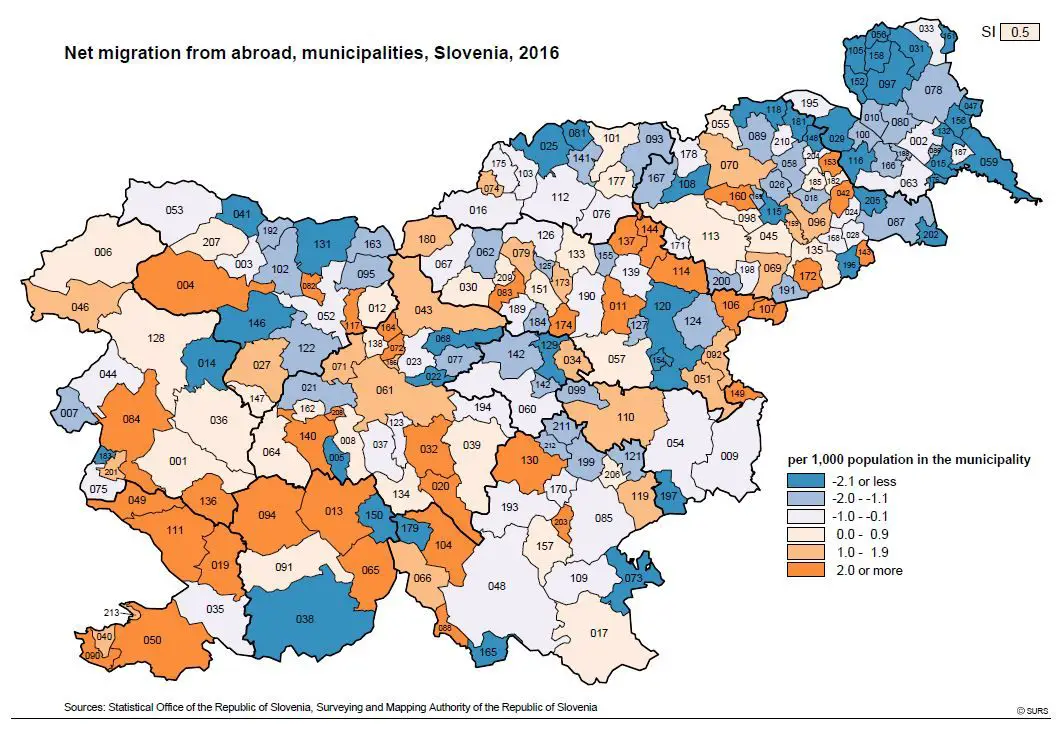February 28, 2018
Based on the latest publicly available data from the Republic of Slovenia Statistical Office (SURS), for 2016, 5.4% of Slovenia’s population is accounted for by foreign nationals, with this number being 9.2% for Ljubljana and 7.6% for Maribor. Three municipalities have more than 10% of their populations who are foreigners. First among these is Zavrč, on the border with Croatia, with a foreign population of 25%, followed by Sežana, near the Italian border, with 11.6%, and then Izola, on the coast, with 11.3%. At the other end of the scale, Solčava, in the Upper Savinja Valley close to the Austrian border, has zero foreign residents.
A PDF of this map can be found here, while an Excel file of the data is here
In 2016 a total of 16,623 people moved to Slovenia, of whom 2,863 were returning Slovenian citizens, while 13,760 were foreign nationals. Most of the Slovenians were from Germany (19%) and Austria (17%), followed by Croatia and Italy, while most foreign immigrants, 35%, came from Bosnia and Herzegovina, with Serbia, Kosovo, Croatia and Macedonia being the other most common countries of origin. By continent, 15,936 new arrivals came from Europe, 436 from Asia, 121 from Central and North America, 70 came from Africa, 47 from South America, and 13 from Australia and Oceania.
A PDF of this map can be found here, while an Excel file of the data is here
Looking at net migration, 5,955 more Slovenes left their homeland than returned to it in 2016, the seventeenth year in a row with this imbalance. In contrast, 2016 was the eighteenth consecutive year that more foreign nationals arrived here than left, with 7,006 moving to Slovenia. Overall net migration was slightly positive for 2016, with 1,051 added to the population, more twice the number seen in 2015 (507). Finally, in 2016 1,297 people gained Slovenian citizenship, while 49 people gave it up.








